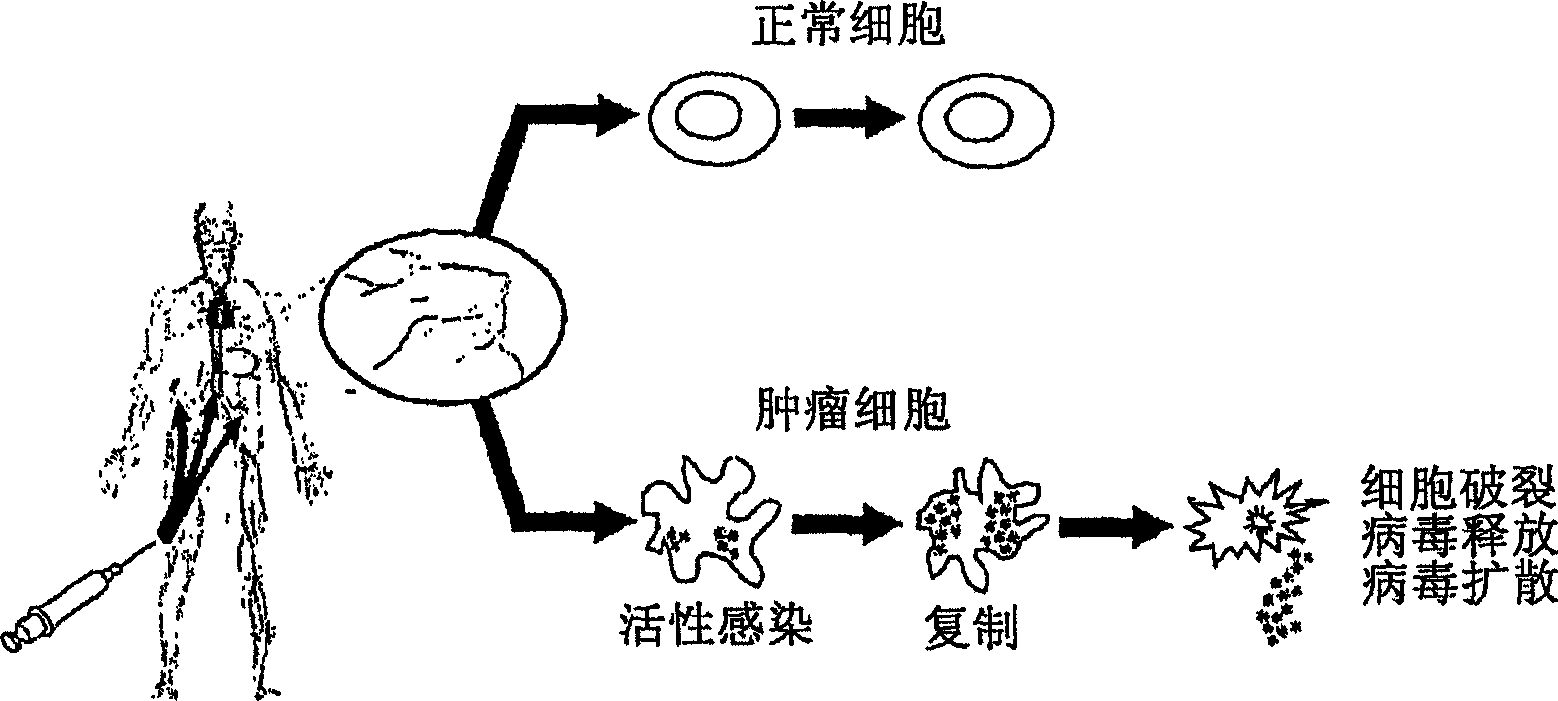Seneca valley virus based compositions and methods for treating disease
A virus genome, virus technology, applied in the direction of medical materials derived from viruses/phages, biochemical equipment and methods, viruses, etc.
- Summary
- Abstract
- Description
- Claims
- Application Information
AI Technical Summary
Problems solved by technology
Method used
Image
Examples
Embodiment
[0243] The following examples are given to illustrate the present invention, and the present invention is not limited to the examples.
example 1
[0245] Amplification and purification of virus
[0246] To incubate SVV in PER.C6 cells:
[0247] SVV was plaque purified once and well-separated plaques were selected and expanded in PER.C6 cells (Fallaux et al., 1998). Crude virus lysate (CVL) from SVV-infected PER.C6 cells can be generated by 3 cycles of freezing and thawing and used to infect PER.C6 cells. PER.C6 cells were treated with Dulbecco's modified Eagle medium (DMEM, Invitrogen, Carlsbad, CA, USA) in 50×150cm 2 Incubation was carried out in a T.C flask. Infected cells were harvested 30 hours after infection when complete CPE was observed and collected by centrifugation at 1500 rpm, 4°C for 10 minutes. Cell pellets were resuspended in cell culture supernatant (30 ml) and subjected to 3 cycles of freezing and thawing. The resulting CVL was clarified by centrifugation at 1500 rpm for 10 minutes at 4°C. SVV was purified by 2 rounds of CsCl gradients: one step gradient centrifugation (CsCl density 1.24 g / ml and 1...
example 2
[0249] electron microscopy
[0250] SVVs were mounted on polymethylvinyl acetate carbon-coated grids using the direct application method, stained with uranyl acetate and examined by transmission electron microscopy. Representative photomicrographs of viruses were taken at high magnification. For transmission electron microscopy, ultrathin sections of SVV-infected PER.C6 cells were cut from embedding blocks and the resulting sections were examined by transmission electron microscopy.
[0251] Purified SVV particles are spherical and approximately 27 nm in diameter, and appear singly or in small aggregates on the grid. Representative images of SVV are shown in figure 2 middle. In some places, ruptured virions and empty capsids, which are permeable to the dye, are also visible. Ultrastructural studies of infected PER.C6 cells revealed crystalline inclusions in the cytoplasm. Representative images of SVV-infected PER.C6 cells are shown in image 3 middle. Virus-infected ce...
PUM
| Property | Measurement | Unit |
|---|---|---|
| diameter | aaaaa | aaaaa |
| molecular weight | aaaaa | aaaaa |
Abstract
Description
Claims
Application Information
 Login to View More
Login to View More - R&D
- Intellectual Property
- Life Sciences
- Materials
- Tech Scout
- Unparalleled Data Quality
- Higher Quality Content
- 60% Fewer Hallucinations
Browse by: Latest US Patents, China's latest patents, Technical Efficacy Thesaurus, Application Domain, Technology Topic, Popular Technical Reports.
© 2025 PatSnap. All rights reserved.Legal|Privacy policy|Modern Slavery Act Transparency Statement|Sitemap|About US| Contact US: help@patsnap.com



